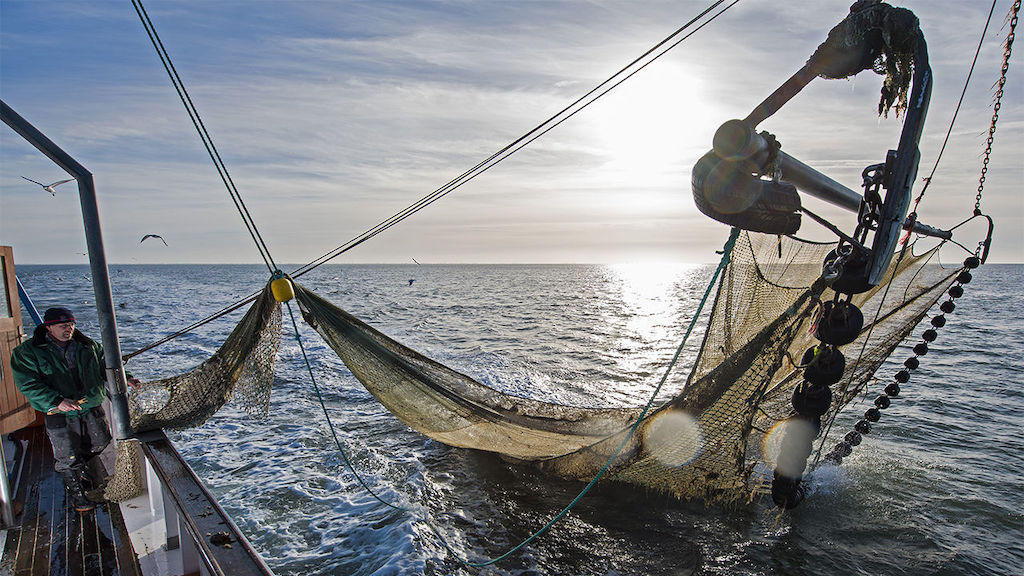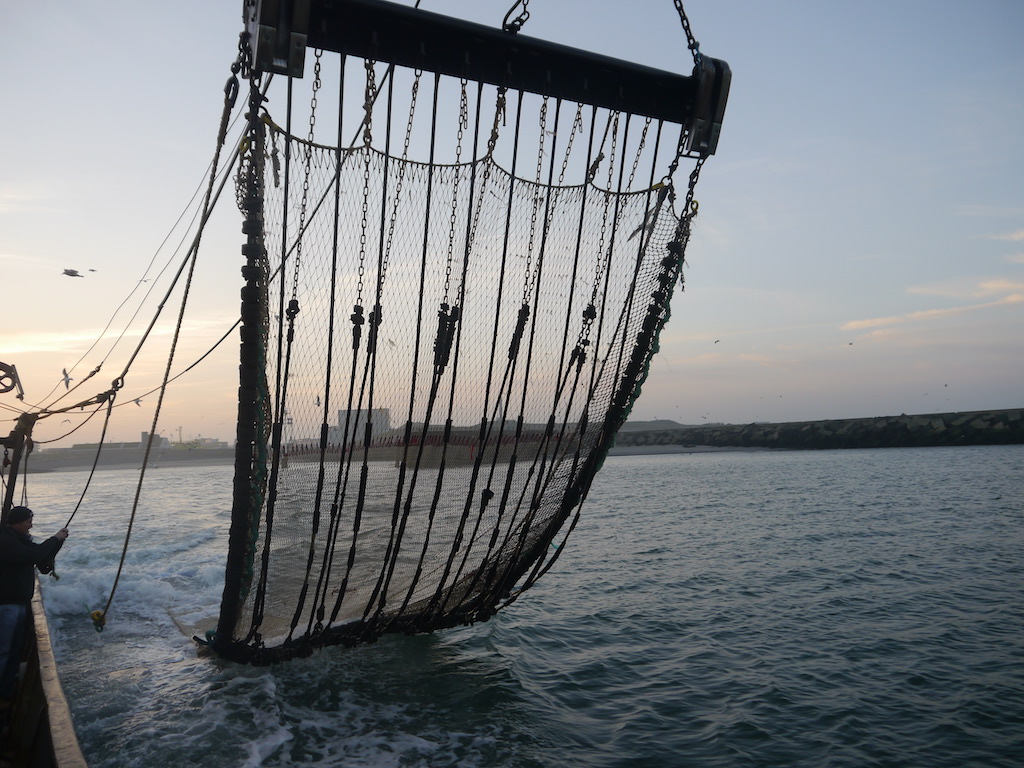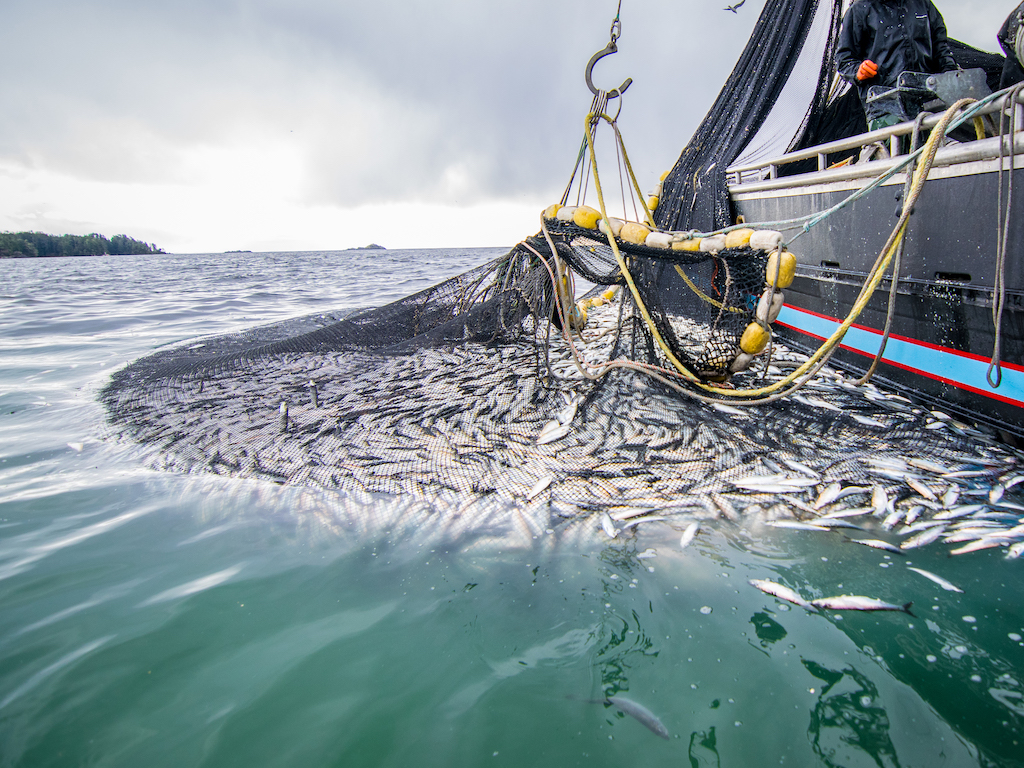Bottom Trawling Fishing Releases More Emissions Than Global Aviation, Study Reveals
4 Mins Read
Scientists have revealed that bottom trawling in the fishing industry is responsible for releasing over a billion metric tonnes of carbon dioxide annually – more than the emissions from global aviation. The findings were published in a groundbreaking international study, the first to map ocean areas that could help address the climate crisis if strong protective action is taken.
Bottom trawling, the destructive practice often used by commercial fishing companies involving dragging heavy-weighted nets across the sea floor, is releasing around 1.47 billion tonnes of aqueous carbon dioxide from the marine soil every single year. The estimate was calculated by a team of international scientists in a first-of-its-kind study mapping ocean areas in need of protection to solve the interrelated climate, food and biodiversity crises.
While the figure represents 0.02% of all sedimentary carbon locked in the ocean, it represents nearly 20% of all atmospheric carbon dioxide being absorbed by our oceans each year – rivalling the carbon losses in terrestrial soils caused by the farming industry and tops emissions coming from the global aviation sector.
“The ocean floor is the world’s largest carbon storehouse. If we’re to succeed in stopping global warming, we must leave the carbon-rich seabed undisturbed,” said study co-author Trisha Atwood of Utah State University.
Read: Seaspiracy – makers behind Cowspiracy debut new documentary exposing fishing industry destruction
“Yet every day, we are trawling the seafloor, depleting its biodiversity and mobilising millennia-old carbon and thus exacerbating climate change. Our findings about the climate impacts of bottom trawling will make the activities on the ocean’s seabed hard to ignore in climate plans going forward.”

The ocean floor is the world’s largest carbon storehouse. If we’re to succeed in stopping global warming, we must leave the carbon-rich seabed undisturbed.
Trisha Atwood, Co-Author, Utah State University
These findings, published in the peer-reviewed journal Nature, represents the most comprehensive analysis about the effects of bottom trawling and the conservation strategies that will be key to solving our ecological crisis, from global heating to preventing the loss of species and habitats contributing to the natural ecosystem we depend on.
“Ocean life has been declining worldwide because of overfishing, habitat destruction and climate change. Yet only 7% of the ocean is currently under some kind of protection,” commented study lead author Enric Sala, an explorer in residence at the National Geographic Society.
“In this study, we’ve pioneered a new way to identify the places that – if protected – will boost food production and safeguard marine life, all while reducing carbon emissions.”
Using an algorithm to map areas where protections would bring about the greatest positive impact on biodiversity, seafood and climate mitigation, the scientists created a “blueprint” outlining that 30% is the minimum amount of ocean that is in need of protection, most located within the 200-mile Exclusive Economic Zones (EEZs) of coastal nations, as well as high seas like the Mid-Atlantic Ridge and Mascarene Plateau in the Indian Ocean.
Safeguarding these areas would protect 80% of marine species, and prevent the more than one billion tonnes of carbon dioxide being released due to bottom trawling.

Ocean life has been declining worldwide because of overfishing, habitat destruction and climate change. Yet only 7% of the ocean is currently under some kind of protection.
Enric Sala, Lead Author & Explorer in Residence, National Geographic Society
“One notable priority for conservation is Antarctica, which currently has little protection, but is projected to host many vulnerable species in a near future due to climate change,” highlighted study co-author David Mouillot, professor at the Université de Montpellier in France.
Fellow co-author Reniel Cabral of UC Santa Barbara’s Marine Science Institute added that one thing is clear: “When overfishing and other damaging activities cease, marine life bounces back.”
The team of international researchers say that the study offers an important framework for global stakeholders and leaders to consider in their climate plans going forward.
“Our approach is a way to bring multiple stakeholders to the table, to show that their interests can be prioritised, and ultimately to demonstrate that solutions that protect large ocean areas and benefit multiple simultaneous objectives exist,” said co-author Darcy Bradley, co-director of the Ocean and Fisheries Program at UC Santa Barbara’s Environmental Market Solutions Lab.
When overfishing and other damaging activities cease, marine life bounces back.
Reniel Cabral, Co-Author, UC Santa Barbara’s Marine Science Institute
“The benefits are clear,” added co-author Boris Worm, Killam research professor at Dalhousie University in Canada. “If we want to solve the three most pressing challenges of our century – biodiversity loss, climate change and food shortages – we must protect our ocean.”
Lead image courtesy of Indian Law Resource Center.




